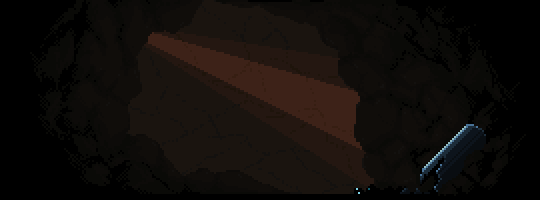Learning Matoran: Lesson 2
Oe a gauru ur a terenye.
Vemo Mata Nui na lhihke lhia,
K’a kaihe a karnye a terevua.
Oe lhe na veta ovemo.
We were separate, and without purpose
So the Great Spirit gave us the Three Virtues:
Unity, Duty, and Destiny.
And these gifts we embraced.
--from “The Legend of Mata Nui”
=l Intro to Nouns l=
Vemo Mata Nui na lhihke lhia,
K’a kaihe a karnye a terevua.
Oe lhe na veta ovemo.
We were separate, and without purpose
So the Great Spirit gave us the Three Virtues:
Unity, Duty, and Destiny.
And these gifts we embraced.
--from “The Legend of Mata Nui”
=l Intro to Nouns l=
At the most basic level, Matoran and English nouns are, well, nouns. They represent persons, places, things, ideas, etc. Grammatically, however, Matoran nouns exhibit some features that are quite different from those in English.
The most pervasive feature of Matoran nouns is the system of grammatical particles by which the roles of different nouns are defined. Particles are function words which can indicate the grammatical roles of nouns, verbs, and/or adjectives in a sentence. In English, some prepositions actually approach the category of “particle” in some verbal constructions.
There are 9 particles in all, split into 3 distinct groups: Case, Motion, and Time/Location. The first group—Case particles—is the most vital to understand and will be discussed first.
[Although the other two categories of Motion and Time/Location should technically also be considered cases, I will separate them here because of the fact that they have much in common with adverbial elements.]
Case Particles:
First, it would be appropriate to explain the concept of Case. If you know or have taken a language like German, Dutch, or even Latin, you’ll know exactly what case is: the role that a noun plays within the structure of a sentence.
In English grammar, the roles of Subject, Direct Object, Indirect Object, Possessive, etc. are all functions of case. These roles are primarily indicated in English grammar by “word-order”: the placement of a noun in a sentence.
For example, the subject of a sentence is usually placed before the verb, while a direct or indirect object normally follows the verb. In many other languages, these roles can be indicated in a variety of different ways (inflection, for example), and word order is not emphasized as much.
This is the situation in Matoran, with different cases being indicated by particles, rather than word-order or inflection (suffixes, prefixes, etc.). As mentioned above, there are three particles to indicate case: subject, object, and possessive.
Subject (Nominative) Case
The Subject (or Nominative) Case, as evidenced by its name, marks the Subject of a sentence—the noun which performs the action of the verb.
It can be indicated by the particle word i, but this is not actually required and can frequently be dropped. Therefore:
matoran “Matoran”
(i) matoran “Matoran (as subject of sentence)" << Parentheses indicate that the particle is optional.
As can be seen, this particle is always placed before the noun. There is also a plural form of the particle: ne (also placed before the noun):
ne matoran “Matoran (pl., as subject of sentence)”
Object (Objective) Case
The Object (or Objective) Case marks a noun as the Direct or Indirect Object of a sentence—the noun which receives the action of the verb or to/for whom the action is done.
It is indicated by the particle a or ea (both are interchangeable). Like the Subject Particle, these are also placed before the noun. The plural forms of the Object Particle are na or nea. Examples:
a/ea matoran “Matoran (as direct or indirect object of verb)”
na/nea matoran “Matoran (pl.)”
Distinguishing whether or not the Objective Case is used as a direct or indirect object is a topic that will be discussed in a later lesson.
Possessive (Genitive) Case
The Possessive (or Genitive) Case indicates the possessor of an object—a noun which possesses another noun.
It takes the particle ui or wa (also interchangeable), which differ from the other two case particles in that they can be placed before or after the noun, depending on the sentence. The plural forms of the Possessive Particle are mi or ma. Examples:
rahi ui/wa matoran – “Matoran’s Rahi” (Matoran = possessor)
rahi matoran ui/wa – “Matoran’s Rahi”
rahi mi/ma matoran – (pl.)
rahi matoran mi/ma – (pl.)
Although the particle can be placed before or after the noun, it should be noted that the possessor-noun (here matoran) always follows the noun which is possessed (rahi).
Etymologically, the origin of the two distinct particle forms for the Genitive Case can be traced to a much earlier stage of the Matoran Language when ui and wa indicated, respectively, possessor and possessed. In time, the role of wa was decreased, and eventually it came to be used simply as a variant of ui.
-------
Now that we have these three basic cases, we are one step closer to being able to compose simple sentences. The only thing lacking is Verbs, and these will be covered (somewhat) in the next lesson: Lesson 3—Intro to Verbs. Stay tuned.
JRRT


10 Comments
Recommended Comments